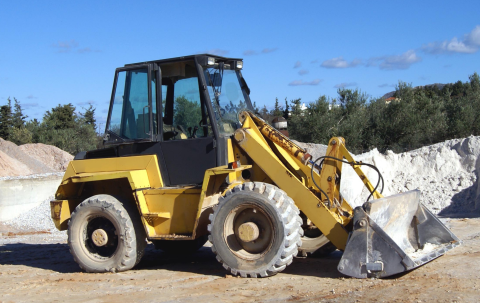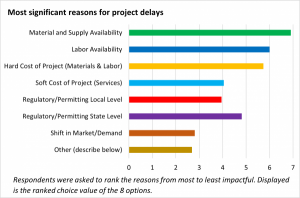A new white paper from Vermont Housing Finance Agency (VHFA) finds that 86% of Vermont housing developers were experiencing project delays during the pandemic. The report draws from an online survey of statewide developers in August and a subsequent forum that brought together over 60 development professionals and state regulators to discuss challenges and potential solutions. Despite unprecedented state and federal funding increases from pandemic relief bills, Vermont’s development community is encountering significant challenges completing projects.

“For at least the near future, housing and public infrastructure projects will likely be more expensive and take longer to complete than before the pandemic. Expectations for those investments need to reflect the current market environment,” said Seth Leonard, VHFA’s Managing Director of Community Development and one of the paper’s authors. “At the same time, the Vermont development community has shown willingness to seek creative and collaborative solutions to help bring much-needed new homes online.”
Most developers reported experiencing delays between four to seven months across their work portfolio. Vermont has actually seen more planned projects during the pandemic than in prior years, with 56 multifamily (5+ units) buildings permitted in Vermont in 2021 through September, compared to 47 throughout 2019. This suggests that the building industry is optimistic about demand for housing, although delays across the industry may slow actual project completion.
Respondents pointed to several factors causing project delays, with material and labor availability ranked as top factors. Higher project costs for materials (particularly lumber and steel) and higher costs and lower availability in labor and services, particularly among certain skilled trades such as electricians, were also cited as a significant factor in delays. 64% of respondents reported that they had abandoned or substantially delayed starting a project due to cost pressures.

These cost increases are ultimately reflected in a project’s bottom line. Between 2020 and 2021, the average cost of a proposed development for a Vermont apartment funded by Low-Income Housing Tax Credits awarded by VHFA rose 9% to $333,774 per unit. However, housing costs had already been escalating prior to the pandemic. A 2019 study found that development costs in Vermont and Northern New England were increasing more quickly than in other parts of the country. The pandemic is further stretching already scarce available public resources to fund affordable housing in Vermont.
The forum discussed ways that state policy makers could help facilitate development and contain costs. Several developers noted that the construction labor force is in short supply and aging, and that the state should invest in promoting building trade career options to young adults. However, the most common frustration voiced among developers in the survey and forum was with permitting and regulations. They noted that permitting in Vermont can be complex, time-consuming and duplicative at the state and local levels. Public interjection into the process can substantially change or even derail a project, adding to delays and costs.
Looking forward, VHFA expects to see continued higher project costs and delays over at least the next 12 months. Although more funding for community development is undoubtedly needed and welcome, the federal infrastructure bill currently under review in Congress is likely to increase pressure on labor, material, and general development capacity. With material and labor costs largely out of state and local control, at least in the short term, policy-related solutions should focus on removing inefficiencies in the permitting and review process, with duplicative federal, state, and local review processes integrated as much as possible.

